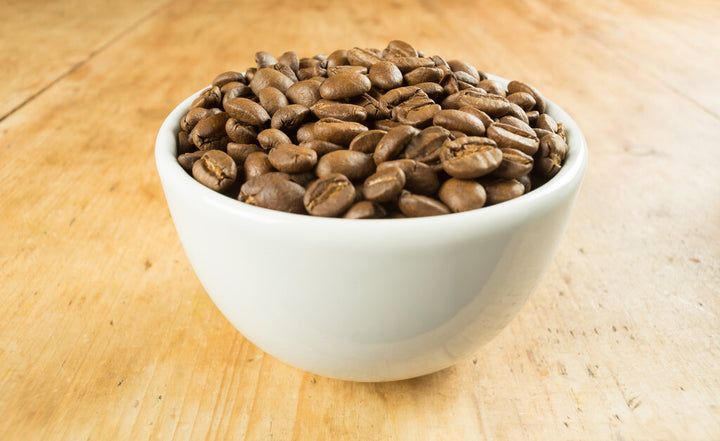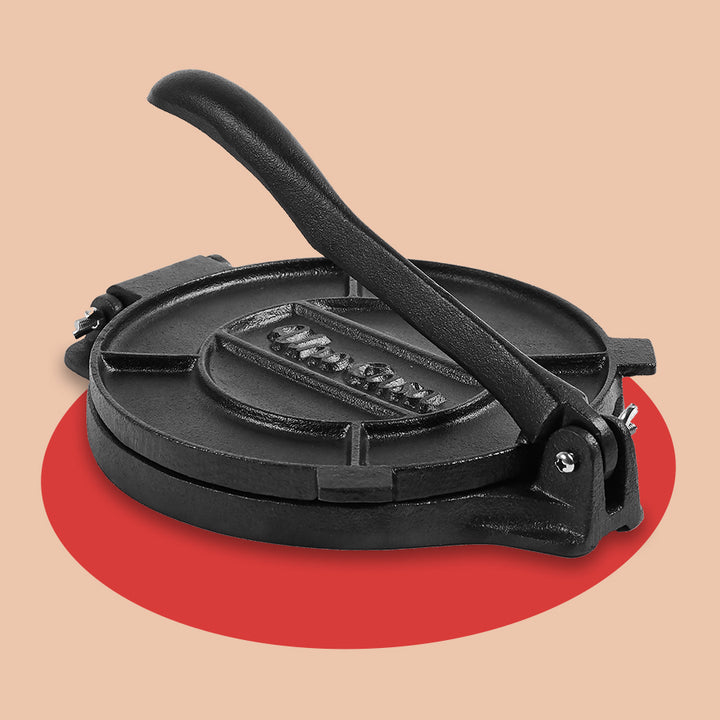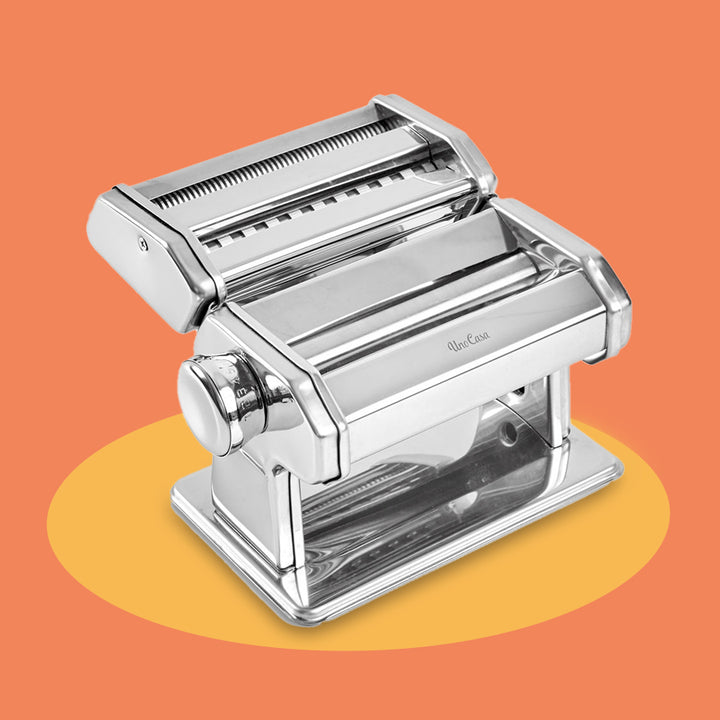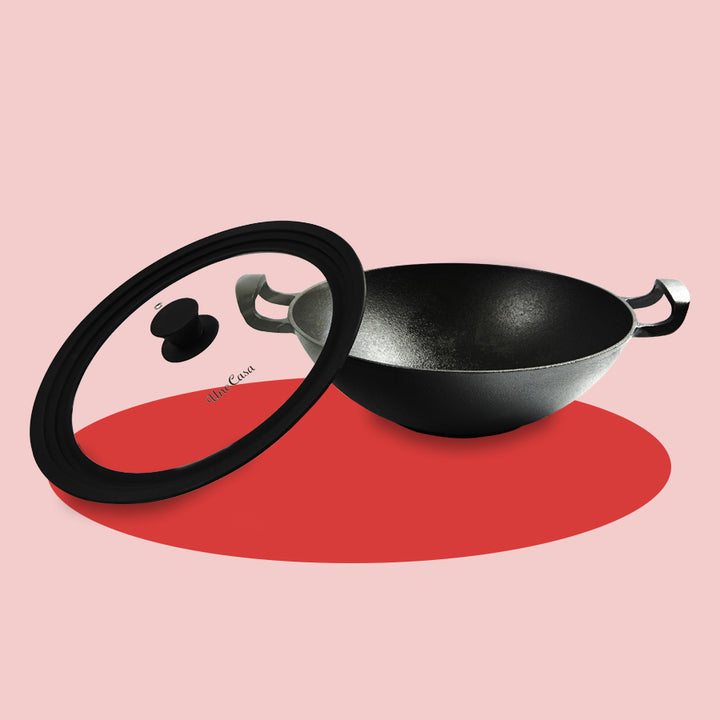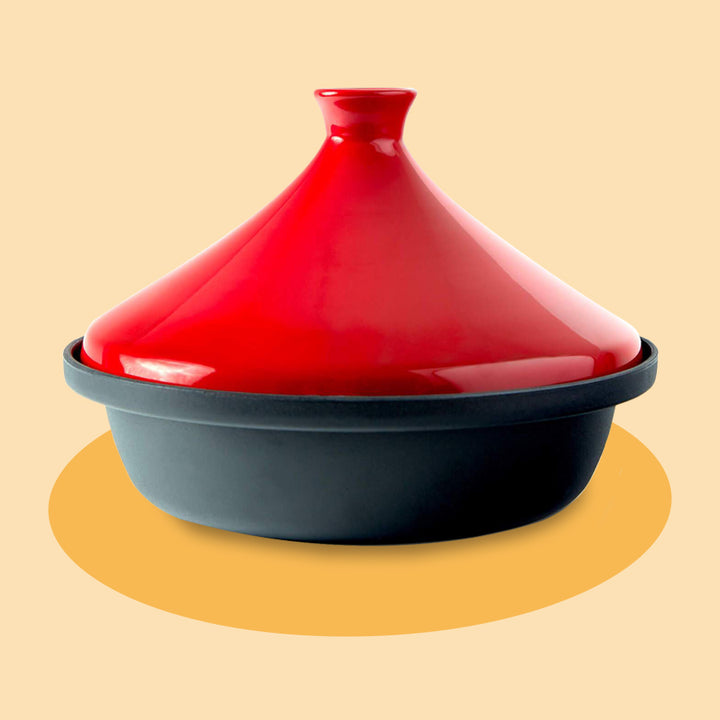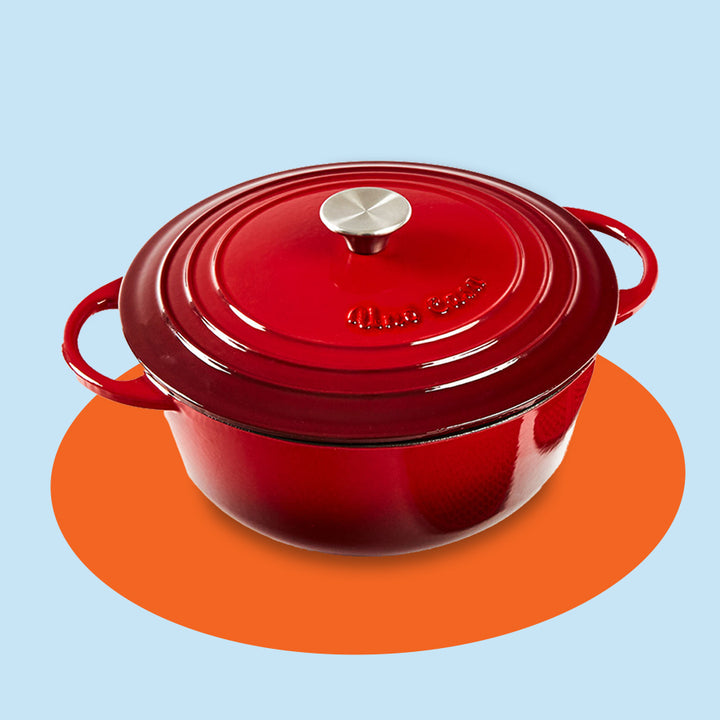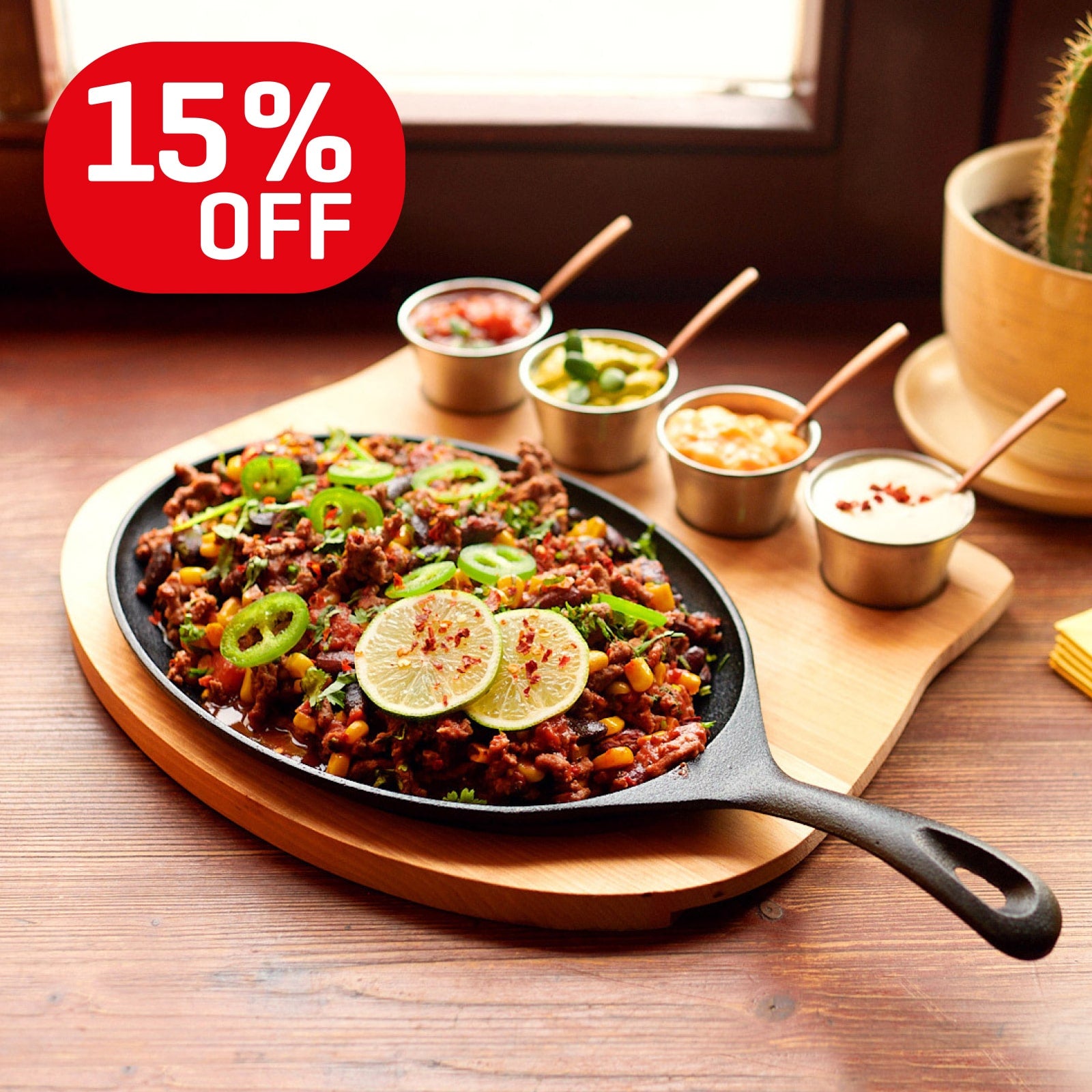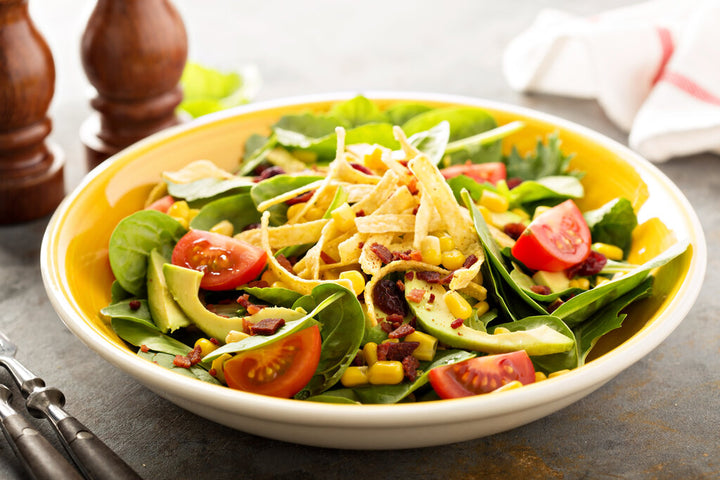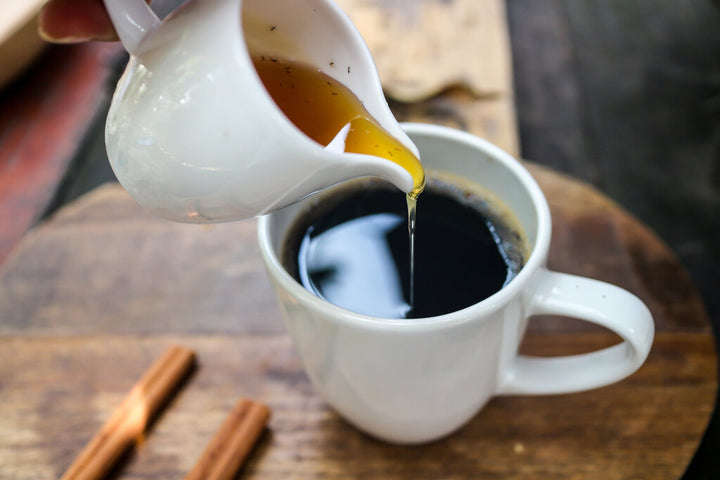Braiser Vs. Dutch Oven: A Full Comparison

Cast iron cookware is an excellent investment: durable, useful, and beautiful. But which is better: a dutch oven or enamel cast iron braiser? We've compared the two so you can choose the right fit for your cooking style.
A solid, well-made, and well-cared-for cast iron dish can last for over 100 years. Since you will likely have any piece for a lifetime, it's essential to choose the one you'll happily use day after day and week after week.
There are plenty of options when it comes to cast iron cooking. Today, we're going to compare two well-known and widely used pieces: enameled cast iron dutch ovens and braising pans. Both are great, but the right choice for you will be the one you're going to use the most.
In this post, we'll walk you through a dutch oven and braising pan definition, the difference between dutch oven and braiser, and help you make your choice a well-informed one!
What is a Braiser?
A braiser is an enameled iron pan with a broad base and sides that are approximately skillet height, at 2.5 inches on average. This dish is also called a tilting skillet, fry pan, or braising pan, and it’s oven-safe, stovetop-safe, and even campfire-safe. Enameled cast iron is a beast of a material that can endure very high heat.
It has small handles on each side, making the transfer from stovetop to oven to table a breeze, and it offers a tight-fitting lid that helps keep food moist while it cooks.
The lid itself is usually domed to give a little extra space for larger cuts of meat or other foods to fit inside.
What is a Braiser Pan Used For?
Braising pans are a hybrid between cast iron skillets and enameled dutch ovens. There are many cooking options with a braiser, such as pan-frying on the stovetop, baking casseroles, meat braising in-oven, and cooking foods that require a tight-fitting lid, like a dutch oven.
The braiser pan has a wide surface area that makes it excellent for sauteing or searing, and it also allows more contact with the heat source during cooking. The domed lid gives you a little extra space to help the braising process.
As meat simmers in liquid, the cover captures the steam, and the rounded shape encourages it to drip back down, keeping your dish perfectly moist.
The Best Uses for Braisers
- Searing small to large cuts of meat without having to turn the meat over
- Shallow frying and roasting
- Braising or simmering with a small to medium amount of liquid
- Pan-frying like a skillet
- Casseroles
- Risotto and paella
What is a Dutch Oven?
Dutch ovens are deep cooking pots made of cast iron with two small handles and a tight lid. Like a braiser, a dutch oven is oven-safe, stovetop-safe, and fire-safe.
A dutch oven is shaped like a large pot, with taller, straight sides with a flat lid, and are great for casseroles, stews, and soups. Their base is narrow and thick.
One difference between the dutch oven and the pot is the material used – most pots are unsuitable for anything other than the stovetop, while a dutch oven can be used in the oven too.
What is a Dutch Oven Used For?
A dutch oven is the best choice when cooking with a lot of liquid, as the tall sides allow you to work with extra space.
Dutch ovens can simmer and braise, but are best not to be used for shallow or pan-frying, as the base is small, and you'd have to reach your arm in the pot to stir and flip smaller foods.
The Best Uses for Dutch Ovens
- Soup, stew, and chili, or any other dishes with a lot of liquid
- Simmering and braising tougher cuts of meat that require a medium to large amount of liquid
- Roasting and deep-frying
- Boiling pasta, rice, or other grains
- Baking bread, like sourdough
Cast Iron Braiser or Dutch Oven: A Comparison
Now that we're a bit more familiar with these two main cooking options, let's look at the critical similarities and differences that can help you choose between them.
Braiser and Dutch Oven Similarities
Material
A dutch oven and braising pan are composed of the same material, so they're both incredibly durable and versatile for use on the stovetop or in the oven. These dishes can be transferred directly to the dining table and used as a serving dish.
Tight Lids
Both of these kitchen tools have tight-fitting lids, so you have a more comprehensive range of cooking options for braising, boiling, and more. The covers help to keep foods moist and retain liquid as you cook.
Maintenance
The enameled cast iron that forms both dutch ovens and braisers is strong and durable, like any cast iron piece. The enamel coating makes things far more manageable, as you don't need to worry about seasoning the surface – the enamel creates a non-stick surface that is much harder to damage than uncoated cast iron cookware.
Braiser and Dutch Oven Differences
Wall Height
The most significant and noticeable difference between these two kitchen tools is the height of the walls. While braising pan walls are usually 2-2.5 inches high, dutch oven walls are about double that at 4.5-5 inches high.
The wall heights affect the types of dishes you can cook in either cookware. The shorter braiser can be used as a skillet or for dishes with a moderate amount of liquid, and the tall dutch oven sides make it ideal for large amounts of liquid, deep-frying, and cooking things that expand, like bread.
Domed Lid vs. Flat
The braiser lid is domed, while the dutch oven's top is flat.
As we mentioned earlier, the domed lid is ideal for braising that requires a smaller amount of liquid while fitting a potentially taller cut of meat in the pan with the lid closed. It also creates more room for steam to bubble up, condense, and drop back into the dish.
While a dutch oven can be used for braising, it doesn't need a domed lid, as the walls hold a more considerable amount of liquid and big cuts of meat. That's why these pots are perfect for cooking tougher pieces of meat, which cook with more direct contact to the simmering liquid and less steam.
Surface Area
A braiser is a similar shape to a skillet, with a much broader base that makes it ideal for pan-frying or roasting, as it provides more direct contact with a heat source for browning food beautifully.
A cast-iron oven has a smaller surface area, so it's best used to cook foods that don't need direct contact with the heat.
Weight
An iron dutch oven's weight is significantly higher, weighing in at an average of 14-16 lbs, plus the weight of whatever you're cooking inside.
A braiser is still heavy, but it's comparatively lighter at 11 lbs on average. There is no question that from a heaviness standpoint, a braiser is easier to work with, but the tradeoff is that you are limited in the size of the meals you can make in it.
Best Cookware Materials: Why Cast Iron?
As we mentioned, cast iron lasts virtually forever. While uncoated iron cookware requires regular seasoning to keep its surface non-stick, an enamel coating removes all of that extra work from the equation.
Another advantage of enameled iron is cooking acidic foods. With uncoated iron, acidic foods like tomatoes and acid-based dishes can break down the oil seasoning and ruin the pan's surface. Enamel coating can cook any ingredient – the acid may dull the enamel's gloss, but it won't damage it.
And the best news yet? You can toss your enameled cookware into the dishwasher, a big no-no for seasoned cast iron! The dishwasher may dull the shine, so we recommend hand washing if you want your cookware to look pretty, but again, the dullness won't affect the utility of the cooking dish.
Final Note: Braiser Pot or Dutch Oven?
Both of these dishes are useful and versatile – if you have the money and the cupboard space, purchase a braiser AND a dutch pot!
If you want to invest in only one piece, take a look at the foods you want to cook. We think the best all-around option for someone who already owns a good-quality pan or skillet is enameled dutch oven or double dutch oven, as you can use it for soups, stews, and braising.
For those who need a good-quality pan and cook in smaller batches, choose a braiser that you can use as both a skillet and to braise smaller cuts of meat.
Either option you choose is a win with these multifunctional kitchen tools!
Care to learn more? Check out our dutch oven vs crock pot and dutch oven vs stock pot articles.
Leave a comment
Comments will be approved before showing up.
Also in Tips
